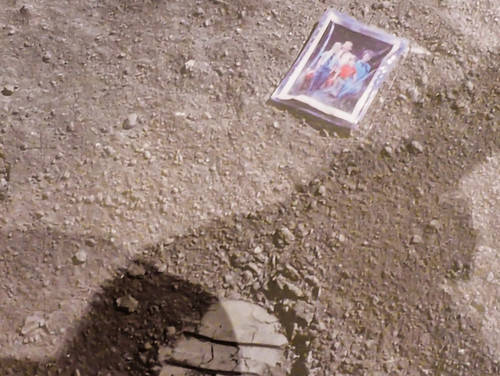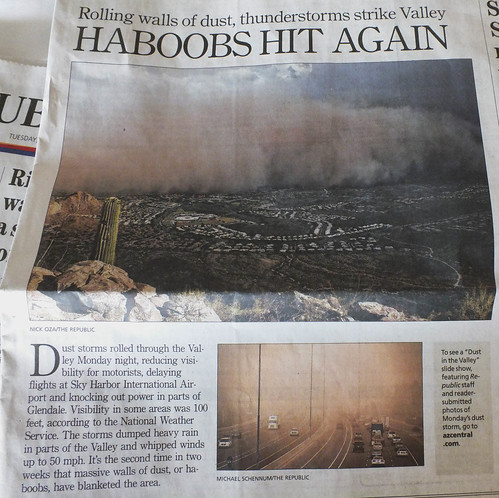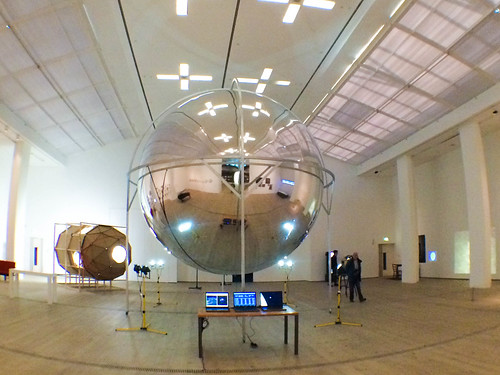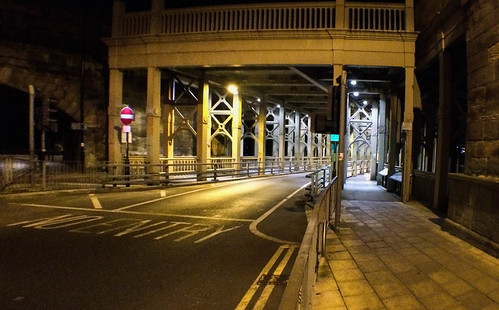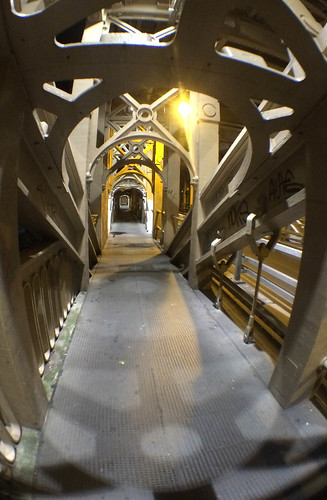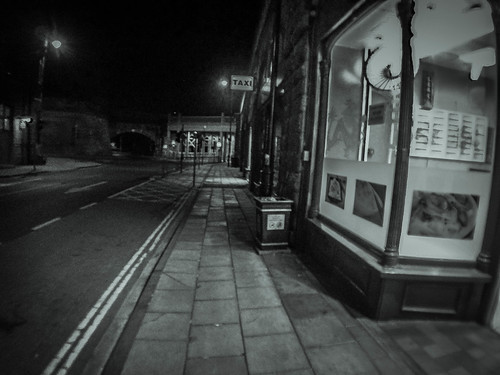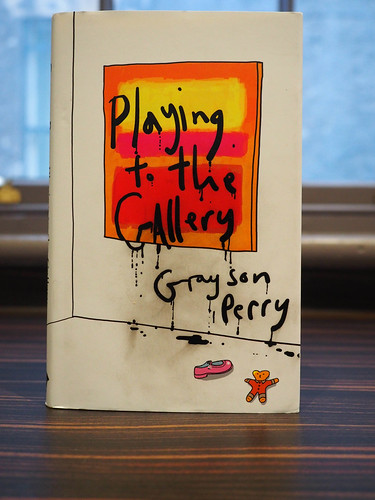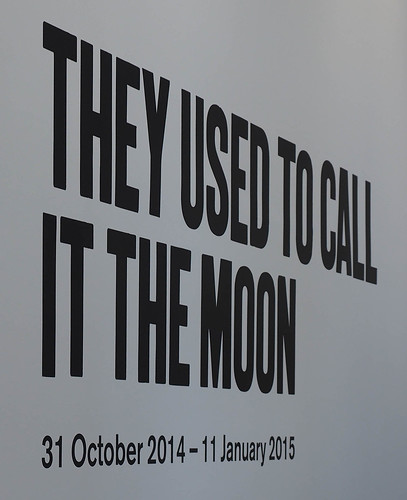
A trip to the moon today, at least in the form of a visit to the thought provoking exhibition
'They used to call it the moon'.

Just inside the main entrance is a large shiny satellite, gleaming and pristine, the stuff of dreams. Today, this is art not science. I must remember it's an installation, not a propellable device.
Onward to one of my favourites, it's part of a collection by
Marko Tadić and comprises found postcards which support the earth's second moon theory.
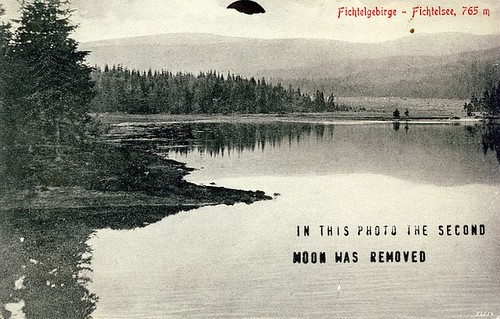
Compared with the full series, this is a cut down version, with scenes from all around the world, sometimes showing two moons and sometimes just showing one or another.
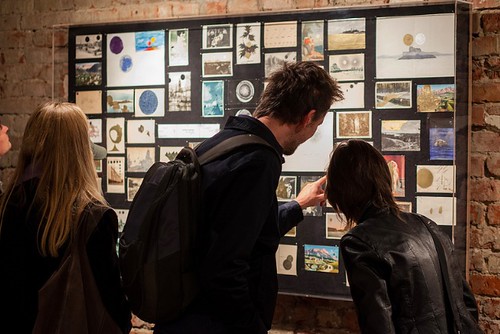
The above view is from the larger show which is also
here.
More recently, there's been the launch of the Russian satellite, which is almost the size of a small moon, so there's a maybe more truth that one might imagine.
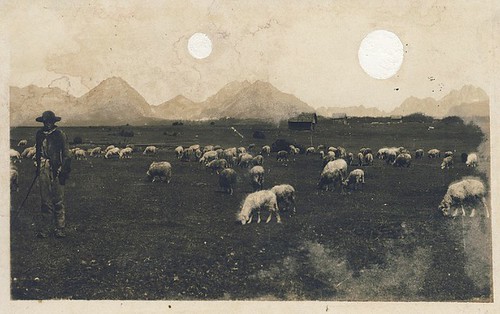
And then there's Joseph Popper's space pod.
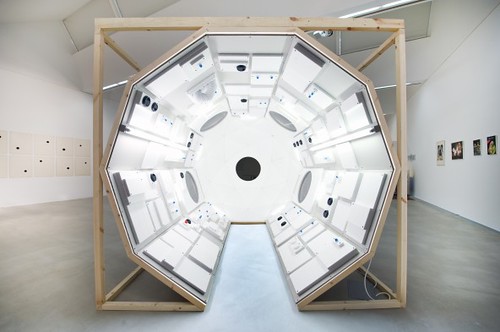
It's just like you'd expect from 2001: A Space Odyssey, or Gravity or Interstellar. I remember visiting some of the space equipment in NASA and being amazed at the simplicity of some of the construction. Forget about semiconductors, part of the technology used electromechanical relays. Yet somehow it all worked.
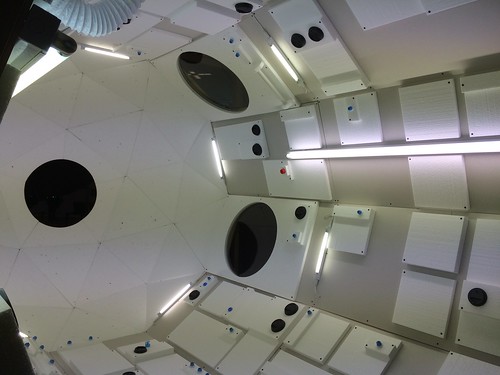
This space pod is similar. A closer inspection reveals it's made of polystyrene blocks, the small black round precision controls are coffee cup lids and the press buttons are from sports water bottles. Look behind it (I'll have to go to this again and try to remember to take a picture) the panels are clipped together with bulldog clips.
There's Katie Paterson's moon bounce Morse-coded music score sent Earth:Moon:Earth and into a shiny black piano playing "Moonlight Sonata" with some missing notes detained in the craters. Appositely across the way is a selection of Kubrick's effects cards from the original 2001 movie.
Yesterday's Doctor Who episode echoed part of the Stanley Kubrick/Arthur C Clarke theme that behind every person alive stands ghosts, and in Clarke and Kubrick the ratio is thirty to one as the ratio by which dead outnumber the living.
It runs that since the dawn of time, a hundred billion human beings have walked the planet Earth. An interesting number, because there are around a hundred billion stars in our local universe, the Milky Way.
So in the 2001 story-telling, for every man and woman who has ever lived, in this universe there shines
a star.
But every one of those stars is a sun, often far more brilliant and glorious than the small, nearby star we call the Sun. And most of those alien suns have planets circling them.
So almost certainly there is enough land in the sky to give every member of the human species, back to the first apeman, his own private world-sized heaven—or hell.
How many of those potential heavens and hells are inhabited, and by what manner of creatures, we have no way of guessing; the very nearest of them is a million times further away than Mars or Venus, those still remote goals of interstellar generations.
As the few trips to the moon signify, the barriers of distance diminish. Another part of this arty exhibition presents a one way space mission, mysteriously blueprinted for 2016.
